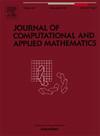基于逻辑微分的构件接头结构重要性分析
IF 2.6
2区 数学
Q1 MATHEMATICS, APPLIED
Journal of Computational and Applied Mathematics
Pub Date : 2025-09-10
DOI:10.1016/j.cam.2025.117057
引用次数: 0
摘要
可靠性工程解决了在设计大型复杂系统时分析组件如何导致系统故障的挑战。这种分析通常被称为重要性分析。一种特定类型的重要性度量是联合结构重要性(JSI),它根据两个或多个组件在系统中的位置来评估它们的重要性。这一措施有助于有效地分配冗余和指导设计决策,以提高整体可靠性。本文提出了一种计算相干系统中独立元件间的互耦系数的新方法。关键思想是利用逻辑微分,特别是通过直接偏逻辑导数(DPLD)。将DPLD应用于基于指标函数的JSI计算是一种新颖的方法。值得注意的是,这种方法允许从由真值表表示的结构函数计算JSI,而不需要将函数转换为布尔表达式。数值算例说明了该方法的应用和优点。此外,还对变电站自动化系统和辅助给水系统进行了实例研究,以证明该技术在工程应用中的有效性。本文章由计算机程序翻译,如有差异,请以英文原文为准。
Joint structure importance of components based on Logic Differential Calculus
Reliability engineering addresses the challenge of analyzing how components contribute to system failures when designing large and complex systems. This analysis is commonly referred to as importance analysis. One specific type of importance measure is Joint Structural Importance (JSI), which assesses the significance of two or more components based on their positions within the system. This measure helps in effectively allocating redundancy and guiding design decisions to enhance overall reliability. This paper proposes a new method for computing the JSI of independent components within a coherent system. The key idea is to utilize Logical Differential Calculus, specifically through the Direct Partial Logical Derivatives (DPLD). Applying the DPLD for calculating the JSI based on the indicator function is a novel approach. Notably, this method allows for calculating the JSI from the structure function represented by a truth table without the need to transform the function into a Boolean expression. Numerical examples are provided to illustrate the application and advantages of the proposed method. Additionally, case studies on a substation automation system and an auxiliary feedwater system are conducted to demonstrate the technique's effectiveness in engineering applications.
求助全文
通过发布文献求助,成功后即可免费获取论文全文。
去求助
来源期刊
CiteScore
5.40
自引率
4.20%
发文量
437
审稿时长
3.0 months
期刊介绍:
The Journal of Computational and Applied Mathematics publishes original papers of high scientific value in all areas of computational and applied mathematics. The main interest of the Journal is in papers that describe and analyze new computational techniques for solving scientific or engineering problems. Also the improved analysis, including the effectiveness and applicability, of existing methods and algorithms is of importance. The computational efficiency (e.g. the convergence, stability, accuracy, ...) should be proved and illustrated by nontrivial numerical examples. Papers describing only variants of existing methods, without adding significant new computational properties are not of interest.
The audience consists of: applied mathematicians, numerical analysts, computational scientists and engineers.

 求助内容:
求助内容: 应助结果提醒方式:
应助结果提醒方式:


